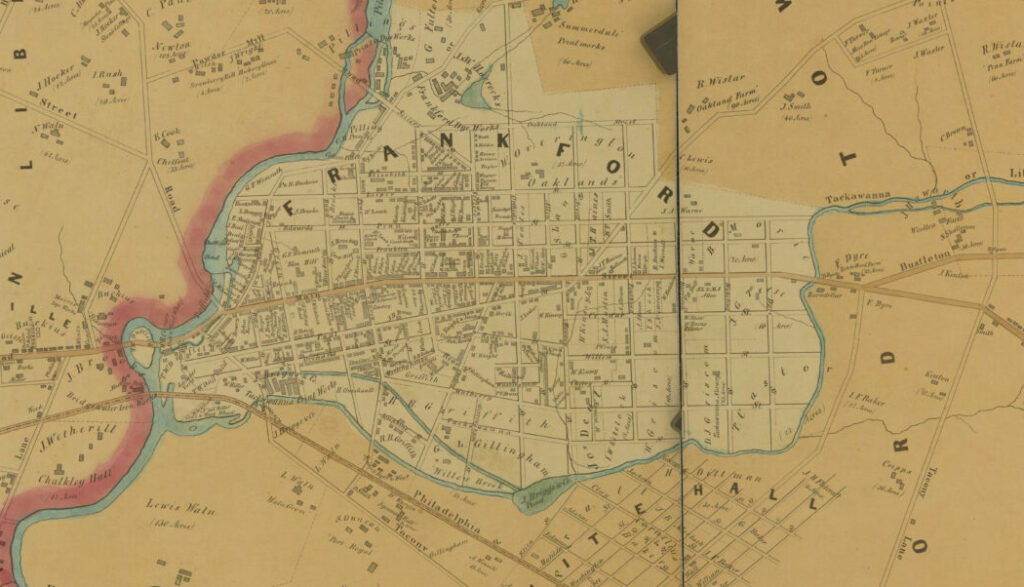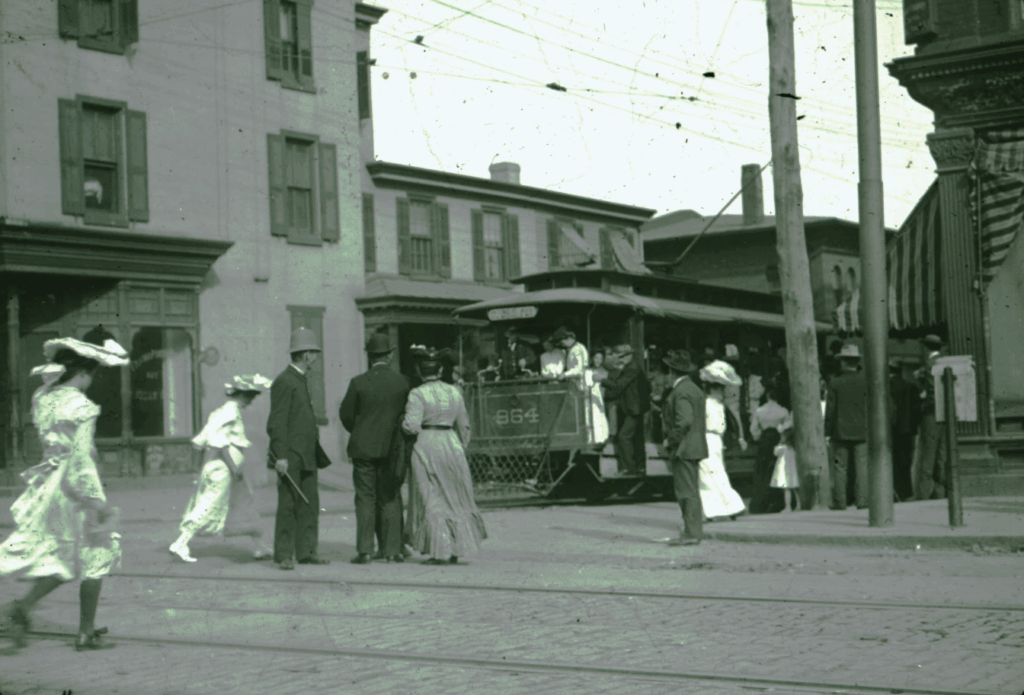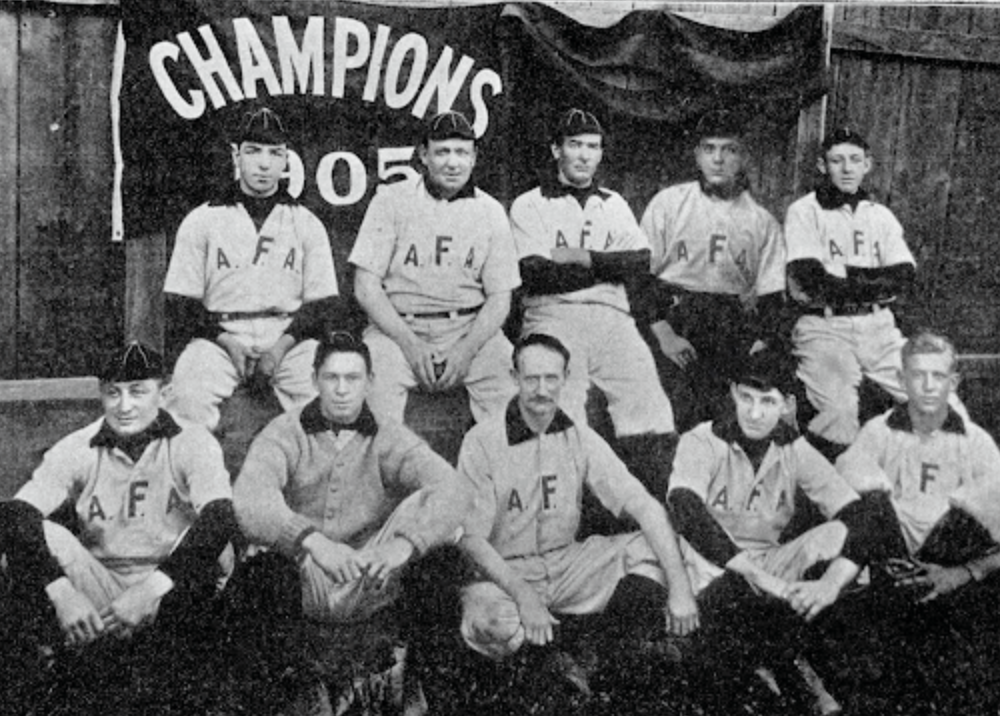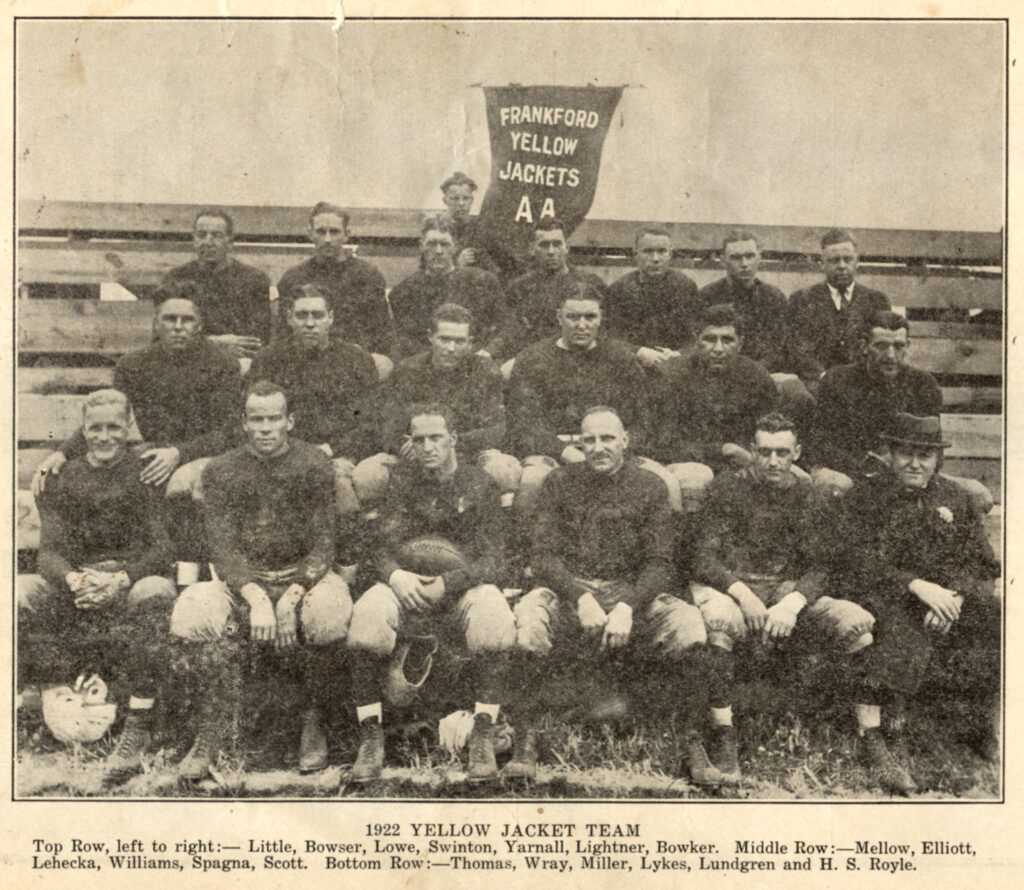Introduction

The Frankford Yellow Jackets were a neighborhood football club that went on to become the first team from Philadelphia in the National Football League.
Though college football reigned supreme in the early 20th century, the Yellow Jackets gained a large following in the neighborhood and would routinely have thousands of fans show up to their games at Wistar Park, Brown’s Field, and Yellow Jackets Stadium. The passion and fanaticism that Philadelphia sports fans are known for today can be traced back to the “Frankfurters” who would attend every Saturday home game and would even travel en masse to watch their Sunday games on the road.
Although the Frankford Yellow Jackets started out as a neighborhood team composed of local players, as they continued to win and face tougher competition, they soon were able to recruit better players from the tri-state area, and eventually were able to bring in former college stars all around the country. The team’s success caught the eye of the upstart National Football League, which was trying to expand from the Midwest to the East Coast. Far from the glitz and glamour of today’s game, the early NFL struggled to compete with college football and professional baseball which were much more popular and well-established.
Chapter 1 – Frankford Neighborhood

The Yellow Jackets football team represented a distinct city-within-a-city in Philadelphia. Frankford – originally its own separate borough – is ideally situated on road and water transportation routes just north of Center City Philadelphia. From its agricultural beginnings, the Frankford economy quickly adapted for the Industrial Revolution as light industry and construction and jobs flooded the neighborhood. Small family-run businesses populated Frankford Avenue, the main thoroughfare for commerce, transport and socializing. Local business owners like Howard George, Will Gibson and Franklin Smedley contributed to the growth of sports in the neighborhood and, eventually, the Frankford Athletic Association, sponsor of the Yellow Jackets football team. Although the neighborhood changed dramatically with the introduction of the Elevated rail line, the community remained fiercely proud. One section of Frankford in particular – the Wistar Estate on Oxford Pike – became home to a number of important institutions like the Frankford Country Club, Frankford High School and, of course, Yellow Jackets football.
Chapter 2 – Frankford Athletic Association (1899-1911)

With economic conditions thriving in Frankford, workers had more time for leisure activities. Sports grew in popularity throughout America after the Civil War, and sporting clubs popped up around Philadelphia. In 1899, the Frankford Athletic Association was formally organized. Along with the Frankford Country Club, it leased land on the Wistar Estate for baseball, football, rugby, basketball, tennis and cricket. Initially led by James McMaster, the Association had a board of directors, shareholders and held regular meetings. Baseball dominated the club’s early years, with a league championship coming in 1905.
Football in 1899 was different from the modern game. Firstly it was known as “rugby football” and the style of play resembled a rugby match – “three yards and a cloud of dust.” Teams consisted of fewer than 20 players, most of whom played both offense and defense. Touchdowns were worth five points and field goals worth four. Teams had both a manager for business affairs and a player who often acted as both coach and captain. Additionally, Pennsylvania Blue Laws forbade home games on Sundays, so the F.A.A. had to compete for attention and attendance with enormously popular college teams of the time on Saturdays.
In 1909, the Wistar Estate came under new ownership, and part of the land was sold to the city for the construction of Frankford High School. The F.A.A. could no longer use the grounds for home games and the change threatened the very existence of the club. Indeed the F.A.A. disbanded for several years – with former players competing as the Loyola Athletic Club – before reorganizing and finding a new home for the Yellow Jackets at Brown’s Field.
Chapter 3 – Rise of the Yellow Jackets (1912-1925)

By 1912, the reconstituted Frankford Athletic Association was playing home football games at Brown’s Field under the leadership of Shep Royle. Fans continued to sell out games and the team increased its standing as a pillar of the neighborhood. Harry Addison March observed in Pro Football, Its “Ups” and “Downs”, that the Yellow Jackets “community backing was only equaled by the Green Bay Packers.” The team continued playing – and beating – local teams like rival Holmesburg, Conshohocken and Atlantic City and Northeastern Pennsylvania coal region teams like Gilberton, Shenandoah and Coaldale.
Pennsylvania Blue Laws worked in the Yellow Jackets’ favor by forcing them to play games on Saturday at home, while reserving Sunday for away games. The team would often play two games in a weekend, while other teams only played one. However, the Blue Laws also worked against them, with many of their losses coming on Sundays after a grueling Saturday game and an uncomfortable overnight train ride.
By 1922, the sandlot team of neighborhood athletes made way for professional players from big-name college programs under the guidance of coach Heinie Miller. The club scheduled games against regional teams from the new National Football League. The independent F.A.A. squad regularly beat the professional clubs, leading the one local newspaper to claim, “The league is beginning to worry about Frankford.”
The club’s growth continued in 1923 when it moved into its own new stadium at Frankford Avenue and Devereaux Street. The following year, it was awarded an NFL franchise, further legitimizing the neighborhood club. All this, along with the hiring of player-coach Guy Chamberlin in 1925, built the foundation for the Yellow Jackets’ most successful campaign in 1926.
Chapter 4 – 1926 Championship

With the addition of Guy Chamberlin as player-coach in 1925, the Frankford Yellow Jackets continued to improve, finishing the season with a 13-7 record in NFL games. The following year, the F.A.A. kept Chamberlin on board and added talented players to bolster the roster, including Swede Youngstrom, Ed Weir, Rudy Comstock and Johnny Budd. After training in Florida, the team got off to a hot start in 1926. Keeping opposing star players like Jim Thorpe and Ernie Nevers in check boosted morale, and the momentum helped the team achieve feats that were previously out of reach.
The season culminated in a showdown against the Chicago Bears, with the winner of the game likely to have earned the NFL championship for the season. The game was so massive that it was moved from Yellow Jackets Stadium to Shibe Park in North Philadelphia to help accommodate the massive demand for tickets. In an era before Super Bowls or NFL championship games, this title game approached that environment and had a Hollywood-style ending with the Yellow Jackets rallying to win their first NFL championship in franchise history.
Chapter 5 – Decline (1927-1933)

After the triumph of the 1926 NFL championship, there was a notion throughout Frankford that the future of the Yellow Jackets would be filled with lots more championship glory. After a disappointing seventh-place finish in 1927, the team had a bounce-back season in 1928 when they finished in second place while having the most wins in the league. A third-place finish in 1929 reinforced the idea that the Yellow Jackets could become a mainstay in the NFL and compete for titles alongside the Green Bay Packers, Chicago Bears and New York Giants.
The dream became a nightmare with a disastrous 1930 season. During the off-season, the F.A.A. managers instituted a strategy of filling the roster mostly with recent college graduates and only a small number of veterans. That decision resulted in the Yellow Jackets finishing with the third-worst record in the NFL and a ninth-place finish.
The following season, everything came to a crashing end when a fire broke out at Yellow Jackets Stadium and rendered the team’s home ground unplayable. The homeless Yellow Jackets tried to fight through the hurdles and battle on the gridiron using other stadiums in Philadelphia for the 1931 season. However, after the team started the season with a 2-6-1 record, the F.A.A. decided to cancel the remaining games. The poor start, along with the stadium fire, mounting debt and the Great Depression, combined to doom the Frankford Yellow Jackets.
The F.A.A. did not field a team in 1932 and suspended operations permanently for all sports. The once-proud neighborhood organization looked to sell the franchise, but the Depression hindered the ability to find a buyer. Ultimately, the Frankford Athletic Association returned the franchise to the league where it remained until 1933 when Bert Bell bought the rights and renamed the city’s team the Philadelphia Eagles.